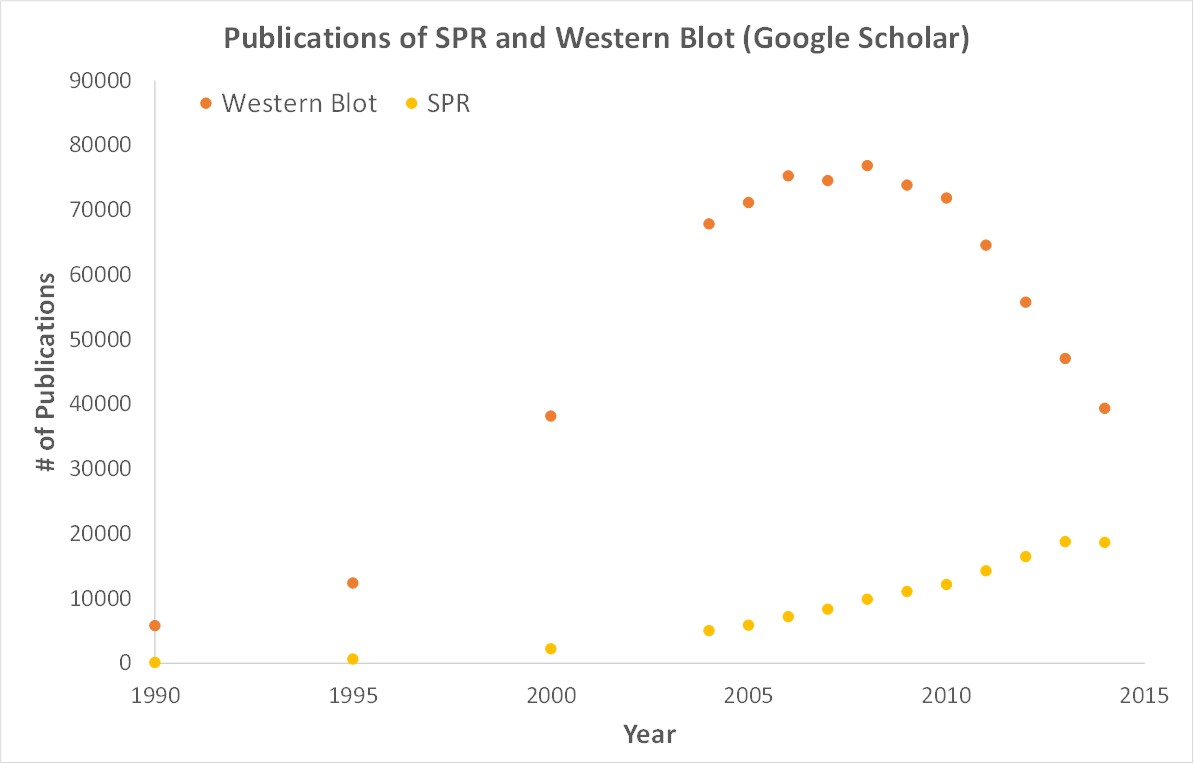Over the last number of years, there’s been an increasing amount of attention on combating mental illness and the associated stigma. Notably, psychiatric counseling is an important facet of treatment when dealing with mental illness in all cases. However, in more moderate-to-severe cases, therapeutic intervention may be necessary to overcome challenging symptoms and provide adequate relief for patients to participate in their daily, regular activities.
Similar to any other pharmacological agent, psychiatric therapeutics may be accompanied by unwanted adverse effects. With the widespread use of phenothiazines in antipsychotic intervention for a number of decades, more severe side effects have been observed in patients including hepatotoxicity, nervous system injury and anaphylaxis. In any therapeutic case, it’s important to understand how the active pharmaceutical ingredient (API) behaves so as to mitigate the potential for negative side effects. Nicoya’s OpenSPR allowed Dr. Huaizhen He et al. to uncover the mechanisms of phenothiazine-induced anaphylaxis.
Notably, at Nicoya, our mission is to improve human life by helping scientists succeed. In this new publication, Dr. Huaizhen He et al. used OpenSPR’s localized surface plasmon resonance technology to provide them with the key binding data needed for their latest discovery. The publication titled, “Phenothiazine antipsychotics exhibit dual properties in pseudo-allergic reactions: Activating MRGPRX2 and inhibiting the H1 receptor” uses binding kinetics data generated from the OpenSPR to observe the interaction potential between the histamine 1 receptor (H1R) and three phenothiazine-class compounds, gaining a more in-depth understanding of the mechanism of phenothiazine-induced anaphylaxis, allowing for safer therapeutics for patients.
About the Publication
Phenothiazines are class of antipsychotics and tranquilizers used since the 1950’s, with a well-documented mechanism of action by acting as dopamine receptor antagonists. It has also been reported that this drug class can act as histamine, serotonin and acetylcholine receptor antagonists, thus providing an extended mechanism of action and increasing drug efficacy. The phenothiazine class of antipsychotics may be further classified into three major subclasses based on their side chain variations. These subclasses include piperzine, piperidine and aliphatic phenothiazines.
Similar to any pharmaceutical agent, phenothiazines are accompanied by common, yet uncomfortable side effects including drowsiness, dizziness, blurred vision and low blood pressure. Notwithstanding the widespread use of phenothiazines in antipsychotic intervention for a number of decades, more severe side effects have been observed in patients including hepatotoxicity, nervous system injury and anaphylaxis. Although it has been reported that phenothiazines can act on H1R, the mechanisms of phenothiazine-induced anaphylaxis are not well-understood.
In this publication, the investigators employed a number of in vivo and in vitro techniques to explore phenothiazine-induced anaphylaxis mechanisms. Mouse models and LAD2 cells were employed to observe calcium mobilization in mast cells upon administration of phenothiazines and cells were subsequently imaged. Intracellular calcium ion concentrations dramatically increased upon administration of phenothiazines which resulted in excessive histamine release and TNF-a, which are known agents to induce anaphylaxis. Moreover, HPLC was employed to observe retention times and infer binding capacity of the three phenothiazines (CPZ, TDZ, and TFZ) to the H1R. Notably, all three compounds retained on the H1R column for extended periods, indicating that all three compounds have strong, yet varying affinities for H1R. However, HPLC only provided indicative binding insight and surface plasmon resonance was used to obtain the on rates, off rates and equilibrium constants of H1R between the three antipsychotic compounds.
Why was OpenSPR instrumental for this research?
Surface plasmon resonance (SPR) was used to quantitatively understand the interaction between H1R and the three phenothiazine antipsychotics under study; chlorpromazine (CPZ), thioridazine (TDZ), and trifluoperazine (TFZ). H1R was immobilized via EDC/NHS coupling on a carboxyl sensor chip and three increasing concentrations of each antipsychotic were injected into the instrument. Importantly, the measured KD values for CPZ, TDZ, and TFZ were 3.44 ± 0.23e-8 mol/L, 2.52 ± 0.16e-8 mol/L and 5.87 ± 0.28e-8 mol/L, respectively, indicating a solid interaction between H1R and the three phenothiazine antipsychotics. Upon completion of their studies, the investigators stated that with prolonged usage of the compounds, histamine accumulation and anaphylaxis may occur and vigilance should be exercised in patients and clinicians to mitigate potentially serious anaphylactic episodes.
In this respect, OpenSPR binding data allowed researchers to gain more mechanistic insight into phenothiazine-induced anaphylaxis. By using OpenSPR, the researchers were able to get SPR data from their own bench, to help them accelerate their research and publish their discovery faster.
Why is SPR critical for publications? How does OpenSPR help?
SPR is a label-free technology which allows researchers to quantitatively analyze binding between two biomolecules. SPR technology allows us to determine the kon, koff and KD of interactions, providing deeper insight into binding events compared to other techniques that only give endpoint measurements, such as pull-down assays. SPR is necessary not only for publications but for the advancement of many fields of medicine and medical research as can be seen below with the significant increase in publications that rely on SPR data.

OpenSPR is a user-friendly and low maintenance benchtop SPR solution that is currently being used by hundreds of researchers. With access to SPR technology on your own lab bench you can get the high-quality data you need to accelerate your research and publish faster.
